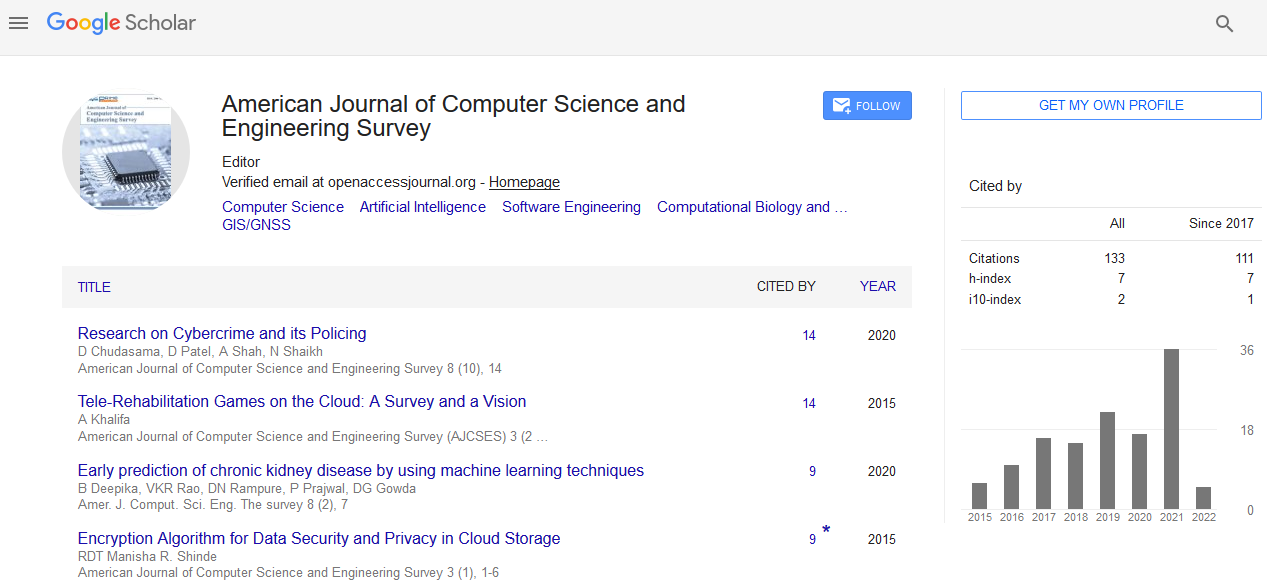Commentary - (2023) Volume 11, Issue 4
The Essence of Geodetic Surveying: Scalability and Flexibility
Flenx Worun*
Department of Medicne, Yale University, USA
*Correspondence:
Flenx Worun,
Department of Medicne, Yale University,
USA,
Email:
Received: 29-Nov-2023, Manuscript No. ipacses-23-18454 ;
Editor assigned: 01-Dec-2023, Pre QC No. ipacses-23-18454 (PQ);
Reviewed: 15-Dec-2023, QC No. ipacses-23-18454 ;
Revised: 20-Dec-2023, Manuscript No. ipacses-23-18454 (R);
Published:
27-Dec-2023, DOI: 10.36846/2349-7238.23.11.32
Description
Geodetic surveying stands as the cornerstone of modern
mapping and land surveying, providing accurate measurements,
coordinates, and a comprehensive understanding of the Earth’s
surface. This specialized field of surveying encompasses a
wide array of techniques and technologies aimed at precisely
determining the size, shape, and gravitational field of the Earth,
along with the precise positions of points on its surface. At its
core, geodetic surveying is concerned with understanding the
Earth’s shape, gravity field, and establishing accurate reference
frames for precise measurements. Unlike conventional
surveying methods, which focus on smaller areas and local
measurements, geodetic surveying extends its reach to
regional, national, and global scales. Geodetic surveying often
starts with establishing reference datums—geometric models
of the Earth’s surface used as a basis for measurements. These
datums include ellipsoids, geoids, and coordinate systems that
serve as the foundation for precise positioning. One of the most
critical technological advancements in geodetic surveying is the
utilization of GPS. This satellite-based system allows surveyors
to determine precise locations on Earth by receiving signals
from satellites, enabling accurate positioning with minimal
error margins. Geodetic surveying involves methods like
triangulation and trilateration to measure distances and angles
between points. Triangulation relies on measuring angles
between points to determine distances, while trilateration
measures precise distances between points using known
positions as references. Understanding variations in the Earth’s
gravitational field is crucial in geodetic surveying. Measurements
of gravity anomalies aid in the study of the Earth’s interior
and help refine geoid models for more accurate positioning.
Geodetic surveying forms the backbone of cartography,
providing accurate and detailed maps used in various fields like
urban planning, navigation, and natural resource management.
It plays a vital role in infrastructure projects like constructing
roads, bridges, and pipelines, ensuring accurate alignment and
positioning. Geodetic surveying supports scientific research
in fields such as geophysics, oceanography, and climate
science by providing accurate Earth-related data. Continual
advancements in satellite technology, such as improved GPS
systems and satellite constellations, enhance the precision and
reliability of geodetic measurements. Maintaining consistency
and compatibility between different national and international
reference systems poses a challenge in global geodetic
surveying. Geodetic surveying stands as a fundamental
discipline, enabling us to comprehend and navigate the world
with precision. Its techniques and technologies, evolving
with scientific advancements, continue to provide invaluable
data for a wide spectrum of applications, shaping how we
understand, map, and interact with our planet. As technology
progresses, the accuracy and relevance of geodetic surveying
will only continue to expand, playing an ever more critical role
in various domains of human endeavor. Efficient integration of
technologies can contribute to environmental sustainability.
By optimizing processes and reducing wastage through
streamlined operations, there can be a positive impact on
resource consumption and carbon footprint. The integration
of technologies represents a powerful synergy that transcends
the individual capabilities of each component. By combining
various tools, systems, or methodologies, integration brings
about a harmonious convergence, driving progress, efficiency,
innovation, and improved outcomes across diverse industries
and domains. As technology continues to evolve, the benefits
of integration will likely amplify, creating new possibilities and
shaping the future landscape of innovation and development.
Acknowledgement
None.
Conflict Of Interest
The author has declared no conflict of interest.
Citation: Worun F (2023) The Essence of Geodetic Surveying: Scalability and Flexibility. Am J Comp Science. 11:32.
Copyright: © 2023 Worun F. This is an open-access article distributed under the terms of the Creative Commons Attribution License, which permits unrestricted use, distribution, and reproduction in any medium, provided the original author and source are credited.

